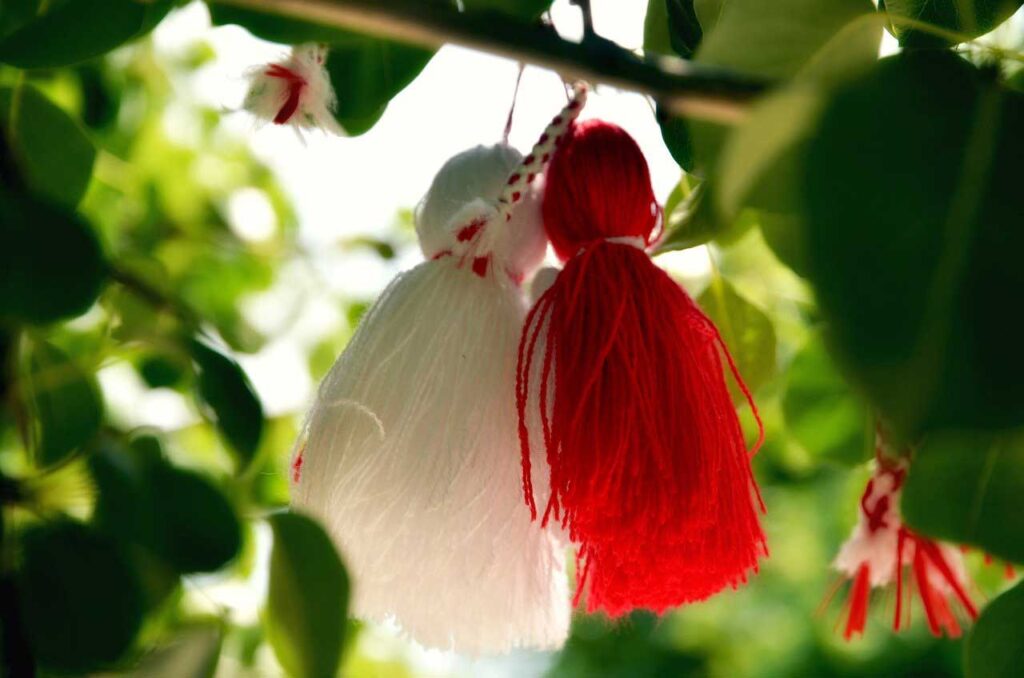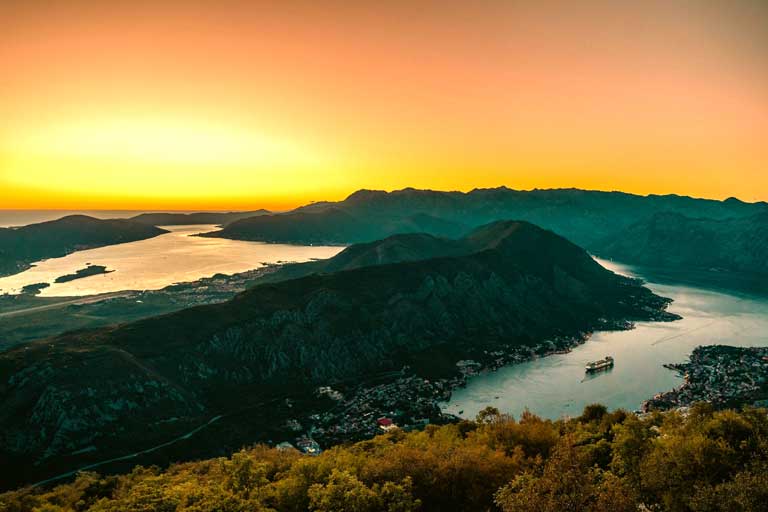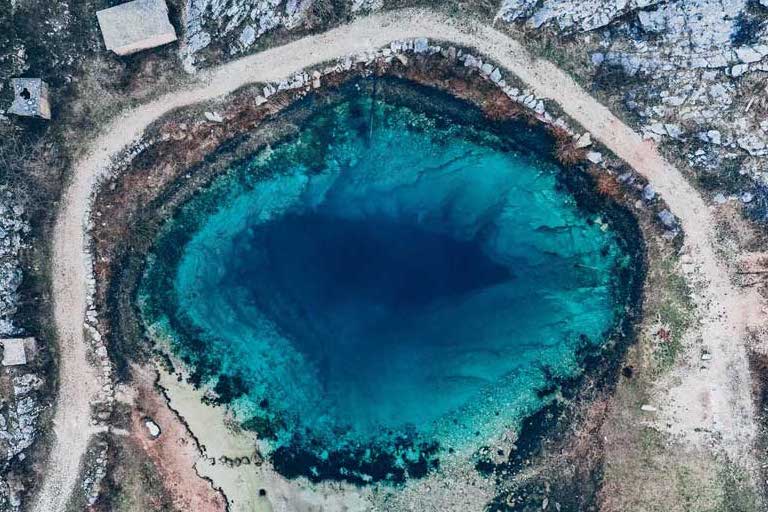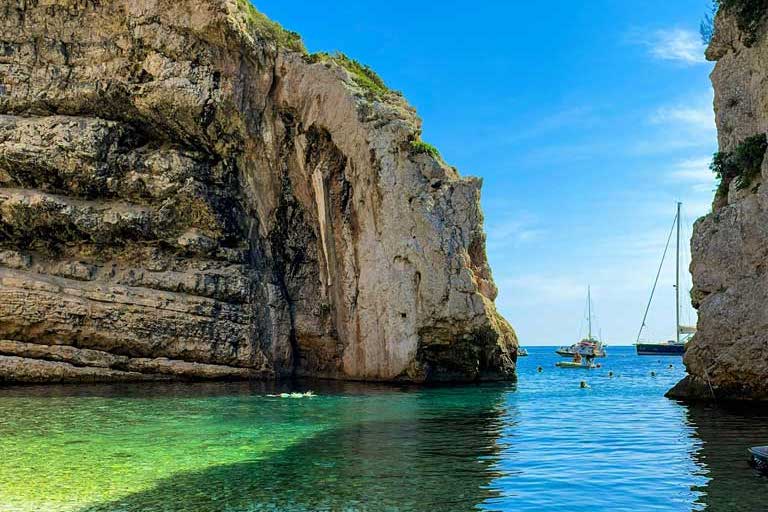Baba Marta — Bulgarian celebration that goes back centuries — takes place each year on 1st March. Why do they celebrate it? The tradition bids farewell to winter and welcomes spring. It’s an intriguing tradition that not many people outside of Bulgaria are aware of.
Knowing, learning, and understanding the traditions of other cultures helps you connect more with the people of that country. If you are visiting Bulgaria during the Baba Marta holiday, you can join in the celebrations and enjoy them to the fullest, as you’ll know the significance behind it.
Today, we’re going to dive deep into this miraculous tradition cherished by Bulgarians.
Baba Marta and Baba Marta Day
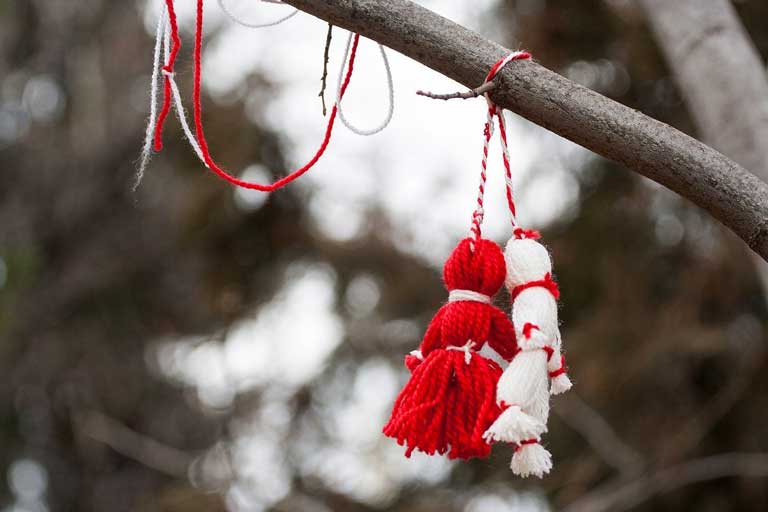
Bulgarian folklore refers to a mythical being called Baba Marta. Baba means grandmother. Baba Marta is an old lady who is always cranky, irritable, and grumpy! Her special powers include bringing an end to the cold spell and ushering the start of spring.
Her terrible mood swings affect the weather, especially in the month of March, which is when the tradition takes place. When she is in a happy mood, the weather is warm and sunny but when she is in a bad mood, winter tends to stay longer.
The ancestors wanted winter to end quickly, so to appease her, they started to wear the colours red and white. The two colours represent martenitsa, which we will get to in a second. Both the young and the old work together to ensure the old lady’s face remains free of frown lines.
What’s the Significance behind the Red and White Décor? The red and white décor is believed to ward off evil spirits and diseases.
Chestita Baba Marta
If you want to see the festivities of Baba Marta in full swing in Bulgaria, then you need to learn how to say, “Happy Baba Marta!” in Bulgarian.
How Do You Say Happy Baba Marta in Bulgarian?
On March 1st, you can partake in the festivities by wishing the locals “Chestita Baba Marta” in Bulgarian.
Wear Martenitsa for Health and Good Luck
Martenitsa or Martenitsi (plural) symbolises several things — health, fertility, lucky charm, and happiness. Bulgarians create Martenitsa using red and white yarn. They take two strands of red and white threads and twist them together to create a talisman. Bulgarians believe that the talisman will fill their year with luck and happiness. They either buy it or create it to gift it to each other.
Who Can Receive Martenitsa?
You can give it to your family, friends, co-workers, and anyone close to you. You can wear more than a Baba Marta bracelet. The modern take on these bracelets sees them decorated with beads and other ornaments. There’s one rule though: Never ever give a martenitsa to yourself because it’s always a gift! Don’t buy it for yourself either but wait for a person to give it to you.
What Do You Do With It? You can tie a martenitsa around your wrists or pin it on your clothes like a brooch. The locals tie it around their wrists and then make a wish on it. You will love the martenitsa they create for children. Their martenitsa has a small toy fastened to the thread. People living in villages or mountains also tie it around their domestic animals or adorn their houses with it. Even you can learn how to create it and give it to your loved one.
How Do You Create Martenitsa?
You can find several videos online with step-by-step instructions on how to make martenitsa. The basic idea behind it is to create it using red and white yarn. You will knit the yarn to create a male and female woollen doll.
The female woollen doll is made using red thread, her name is Penda, and she wears a cute red skirt. The male woollen doll is made using mostly white thread and his name is Pizho. Put them together and you have the traditional Baba Marta martenitsa.
What is a Baba Marta Bracelet?
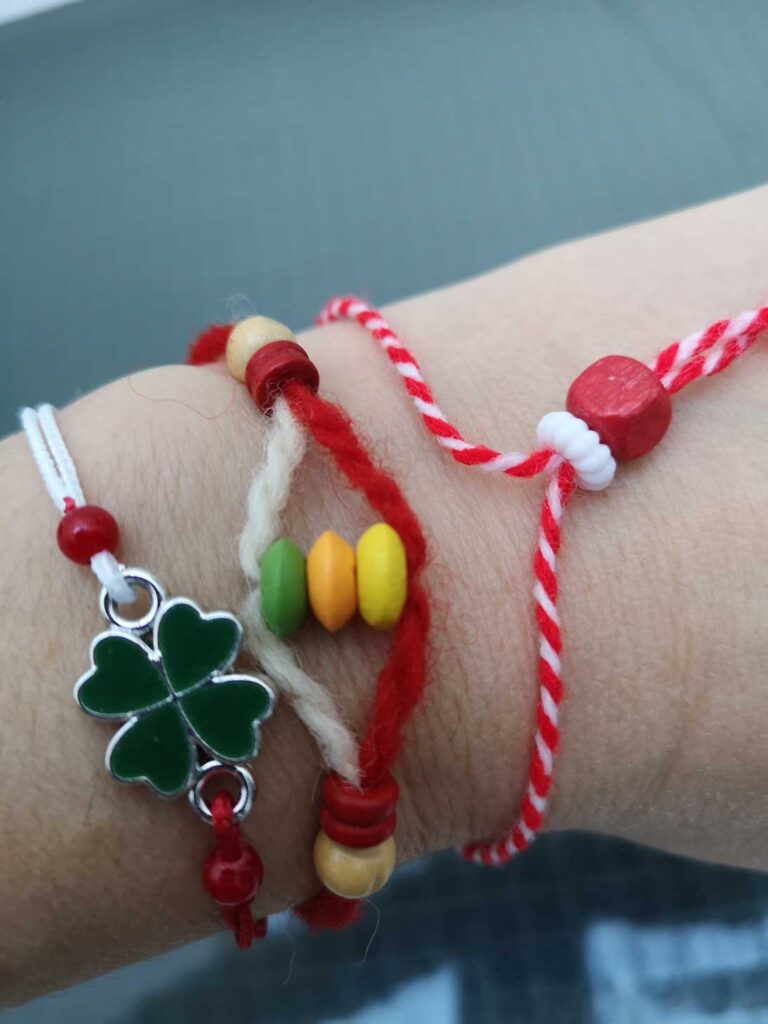
A Baba Marta bracelet is made using twisted white and red woollen, cotton, or silk threads. Although martenitsa in the shape of a bracelet is more commonly created and worn, you can also find it in other shapes such as necklaces, pompoms, tassels, and balls with the same red and white colour scheme.
What Do the Colours Red and White in the Martenitsa Represent?
Penda, the female doll, is dressed in red whereas Pizho, the male doll, is dressed in white. The white colour represents innocence, joy, beauty, and purity. The red colour represents health, bravery, love, fertility, and vitality.
Bulgarians believe that the colour red represents a setting or rising sun and that the shade harnesses the sun’s power, which gives it the ability to give life to every creature. Their strong belief in Baba Marta Day sees them wearing the Baba Marta bracelet for a certain duration.
When to Take Off Martenitsa?
Bulgarians take off the martenitsa when they see the first sign of spring approaching. The first sign of spring can be seeing a blossoming tree. The locals tie the martenitsa on the tree to give it the gift of life, boundless luck, and good health, so it too can enjoy the same benefits they enjoyed during the start of Baba Marta.
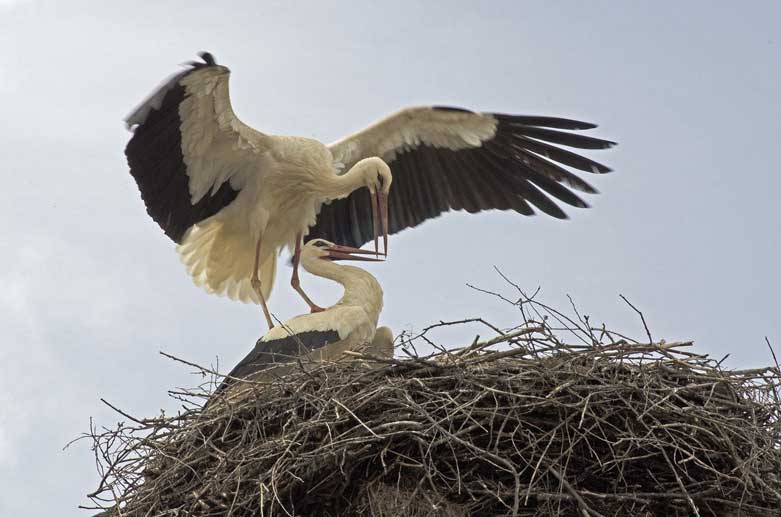
Another sign to remove the martenitsa is when you see a swallow or a stork. These two birds migrate to Africa in the winter and return to Bulgaria in the middle of March. You can also place it under a rock and then check it in the morning. The type of creature that’s closest to the rock determines your health for the remainder of the year. The creatures include:
- Worms or larvae mean the coming year will bring you success and good health.
- Ants will bring you success as well but you will have to work harder to achieve it.
- Spiders mean that the coming year will not bring you success, health, and good luck.
If you visit Bulgaria at the start of spring, you will see trees decorated with martenitsa. In the event you miss all these signs to take it off, you can remove it at the start of April. However, the Baba Marta tradition didn’t just come about suddenly, but the tradition’s origins date back several centuries.
Baba Marta Tradition – What Is It About?
To better explore the Baba Marta tradition, know that it was born out of several legends. Let’s start with a few of them.
The Founding of Bulgaria: The Message
Khan Asparuh, the Founder of Bulgari, left his wife Ahinora back home as he journeyed to explore the world. His exploration led him to discover Bulgaria in 681 AD. His wife entwined red and white threads and put them on a swallow’s leg to send a message of love, health, and prosperity to her husband.
Khan Asparuh: The Victorious King
Khan Asparuh defeated the Byzantines and to show his gratitude to God Tangra, he needed to throw fennel seeds into the bonfire. However, fennel seeds didn’t grow in Bulgaria. The desperate and panicked King didn’t know what to do.
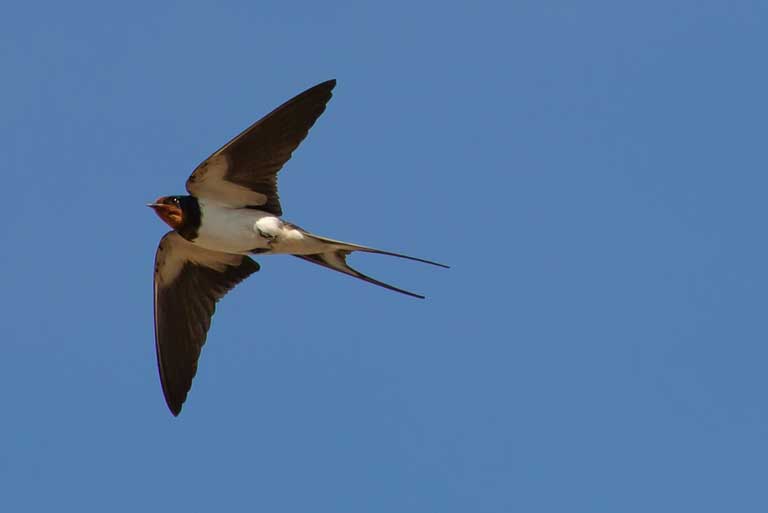
Suddenly, a swallow, carrying fennel, landed before him. His sister had sent the bird and had tied red and white cotton to its leg, representing luck and health. For this reason, you will see a swallow on the greeting cards for Baba Marta Day.
Another version of the same story is when the King won the battle against the Byzantines, he tied white threads to doves and sent them to the main camp to tell them about their victory. The white threads turned red during the flight, hence creating the first Baba Marta bracelet.
Bulgarian Ruler Khan Kubrat’s Last Will
The Bulgarian ruler had six children, one daughter named Huba and five sons. His last wish before passing away was for all his sons to rule Bulgaria together instead of dividing the country. Unfortunately, none of his sons honoured his final wish.
Asparuh, the late King’s youngest son, went with his followers in search of a new kingdom and discovered modern-day Bulgaria. He wanted to share the good news with his imprisoned sister Huba, so he sent his hunting falcon to her.
He had tied a white rope to the falcon’s leg. When the falcon reached her, she escaped and followed the bird by keeping an eye on the white thread dangling from its leg. She and her brother finally reunited. Sadly, the bird had gotten hurt along the way and its blood had turned the white thread red.
Asparuh saw this as a sign and started using the white and red colour combination as a symbol of happiness, strength, and unity between the Bulgarian people.
Defeating the Dark Arts
Ethnographers traced the origins of this tradition to the Eleusinian Mysteries. According to them, priests used to tie a red thread around their right foot and hand. They believed that the colour red could protect people, particularly children and young adults from witchcraft and evil demons.
These are just tales of how Baba Marta in Bulgaria began. While these legends gave birth to an incredible tradition in Bulgaria, Bulgarians started their mini traditions. It was just their own way of honouring the Baba Marta tradition.
Where Else is Baba Marta Day Celebrated?
Baba Marta isn’t only celebrated in Bulgaria but it’s celebrated in other countries like Romania and Greece as well.
Greece
In Greece, the tradition of tying martenitsa to wrists comes from the Balkan Peninsula’s pagan history. The tradition is closely followed by farming families in the country such as areas that are high up in the mountains.
In small villages in the country, grandmothers tie the martenitsa on their grandchildren’s wrists to ensure they remain cheerful and healthy all year long.
Although this tradition is rarely followed in bigger cities in Greece, you will find university-going students and any place where you will find a gathering of young people celebrating the tradition by wearing Baba Marta bracelets on their wrists.
Romania
In Romania, martenitsa represents an ancient symbol, which signifies the revitalisation of nature at the start of spring. The ancient tradition is related to the symbolic birth and death of Baba Dokiya, a local female Goddess.
Baba Marta— what to Expect on 1st March in Bulgaria
The locally celebrated tradition continues to amaze tourists who unexpectedly encounter it on their holiday to Bulgaria.
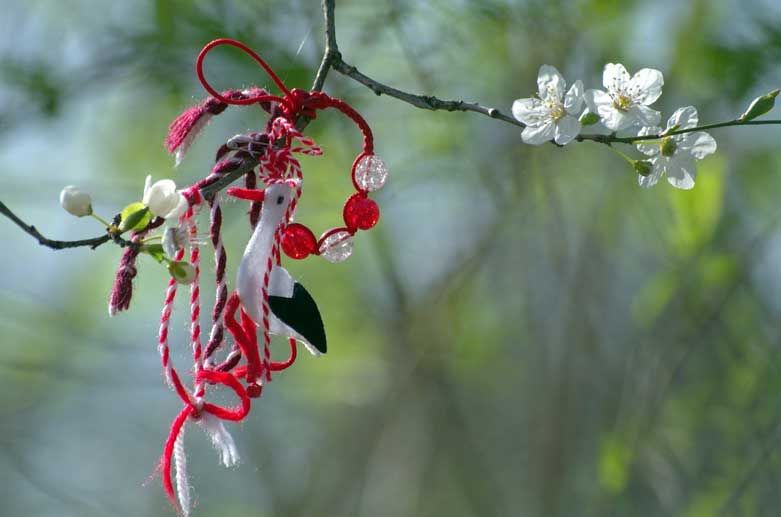
Why have an unexpected encounter when you can visit Baba Marta in March? You will see buildings and trees covered in red and white Baba Marta bracelets. You can be a part of the festivities and rejoice with the locals as they look forward to trees blossoming and birds returning to Bulgaria.
It’s a wonderful sight — one that you wouldn’t want to miss! Come see Bulgaria in a new light!

